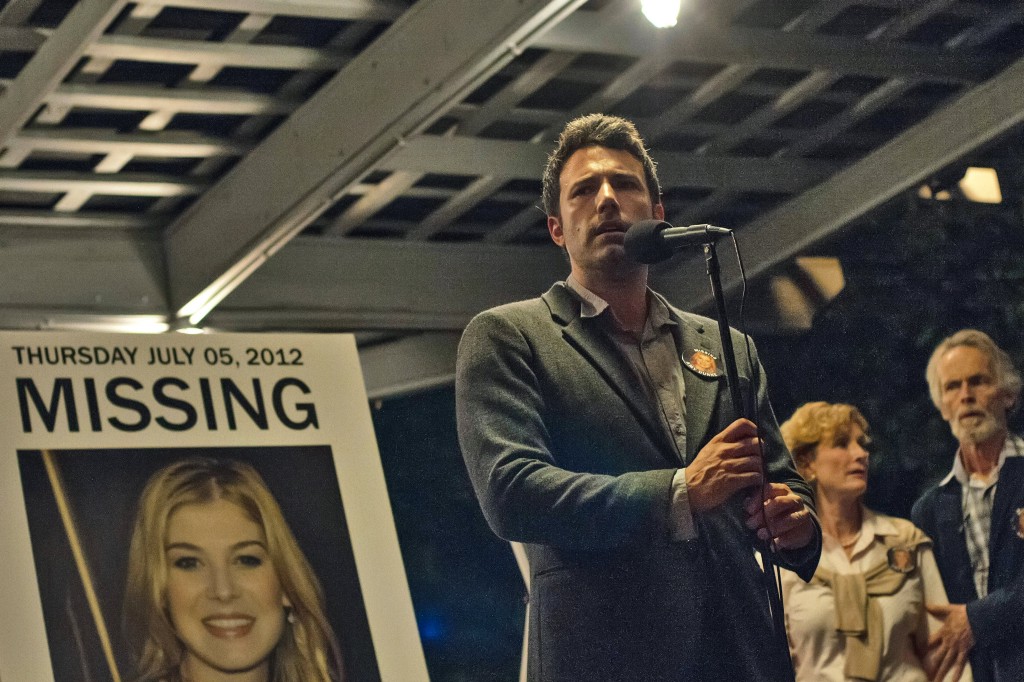Paul De Jong, "Auction Block"
Here is one half of The Books, who stopped releasing music under that name in 2012, with a track that fans will enjoy greatly and that people who dislike The Books for gimmickry or preciousness will find impossible to finish. Good morning!
New York City, February 9, 2015

★ Another Monday, another underdelivering storm. This one’s dramatic peak came before dawn, with the sinister ticking of ice against the windows. The result was somewhere between danger and annoyance, under a dispiriting dark sky. The caution tape roping off the glazed-over forecourt rattled in the wind. By afternoon, the ice was going over to a film of slushy grit. The seven-year-old took big looping strides, flexing the rubber ankles of his boots. The cold seeped right through the knit hat. Uncollected dog shit was dissolving everywhere on the sidewalks; one dog, rather than waiting for nature take care of the liquefaction, appeared to have gone ahead and sprayed diarrhea alongside the urine on a snowbank.
The Husband Did It
by Alice Bolin

“It’s always the husband. Just watch Dateline,” Gillian Flynn writes in her novel Gone Girl, telling a public who gawked through the OJ Simpson and Scott Peterson trials what they already know. Flynn’s novel, along with David Fincher’s faithful 2014 movie adaptation, is the subversive American noir of the Court TV era. It features two remarkably odious narrators: Amy Dunne is cruel, self-important, and vindictive, as she meticulously frames her husband for her own murder to punish him for cheating on her. Her husband, Nick Dunne, is self-pitying and self-deluded. Told by these two exaggerated voices, the story is a pulpy, shameless thriller, theatrical in every element, including its self-conscious interest in true crime television and the trope that spawned its premise.
To plan her crime Amy watches shows about police procedure and reads true crime books, luring Nick into doing classically suspicious things like taking a life insurance policy out on her. And once Nick is under suspicion, he tries not to do anything that would fit Dateline’s picture of “guilty.” “I knew from my shows, my movies, that only guilty guys lawyered up,” he says. Gone Girl depicts the true crime obsession as a feedback loop — “Serial killers watch the same shows we do,” one of the detectives says — and Amy sees in them a chance to transfigure herself. She makes herself the author of her own narrative (literally, in the falsified diary that forms her early chapters of the novel), a narrative where she was “the hero, flawless and adored,” she writes. “Because everyone loves the Dead Girl.”
What else could she gather from the proliferation of true crime stories on television, from news magazine shows like 20/20 and 48 Hours to Court TV — originally a C-SPAN for salacious nineties court cases, which “came into its own during the Menendez brothers first trial and later during the O.J. Simpson murder trial” — thanks, Wikipedia — and is now reaching its gleeful, febrile, shameless apex. Reborn in 2008, the cable network Investigation Discovery (formerly Discovery Times, formerly Discovery Civilization Channel, formerly Discovery Civilization Network: The World History and Geography Channel), is now all murder, all the time. A sample of its current programming: Beauty Queen Murders, Catch My Killer, Deadly Devotion, Motives & Murders, Nightmare Next Door, Murder.com, Unusual Suspects, and Wives With Knives.
If you watch enough hours of real murder television you experience a peculiar déjà vu — despite what would seem to be a wellspring of new cases, the same murders are recounted again and again, migrating through Investigation Discovery programming blocks. The story of Clearwater, Florida airline gate agent Karen Pannell, who was murdered by her ex-boyfriend Timothy Permenter in 2003, has been on Dateline, Forensic Files, and the Investigation Discovery original program Solved. The most memorable fact of the case is that Permenter wrote “ROC,” the name of another of Pannell’s exes, in her blood on the wall above her body, lamely attempting to forge a “dying declaration.” This detail gives it the feel of a whodunit. In interviews on Dateline, Forensic Files, and Solved, detectives emphasize, again and again, the gruesome glamour of this clue: “It’s not something you’ll typically see in a homicide case”; “It’s more likely something you’ll see in a TV show or in a movie”; “It was like something you’d expect out of a Hollywood movie”; “It’s like something out of the movies.”
It’s a clue that announces itself, like the ones in Amy’s sinister scavenger hunt in Gone Girl that lead Nick and the police to all the evidence she has planted. The grotesque melodrama Amy orchestrates is prodigious, but still I found her more sympathetic than Nick, who is so convinced that he has tried, at every moment, to do the right thing. His father was an abusive misogynist, but Nick says, “I’ve tried all my life to be a decent guy, a man who loved and respected women, a man without hang-ups.” When his issues with women do leak through, like when he becomes momentarily furious that a female detective is telling him what to do in his own home, he blames it on being raised by his father and thinks his self-awareness will absolve him. He is the classic male victim. Even his misogyny is something that was done to him. This is why Nick’s is the more damning characterization: because Amy bears no resemblance to any person who has ever walked the planet, but she bears a resemblance to women as conceived of in the nightmares of men like Nick, and there are many of those men walking the planet. For “decent” guys like Nick, comfortably vested with patriarchal authority, the nightmare is to no longer be the narrator of their own story. In Gone Girl, Flynn cracks open the culture and lets Nick say one of our unsayable beliefs: that it is scarier for a man to be accused than to be killed.
The noir genre was borne from the economic upheaval and disenfranchisement of Prohibition and the Great Depression, which has everything to do with its function as, in Sarah Nicole Prickett’s words, “a grim and slippery indictment of American masculinity.” When has the masculine fantasy — The American Dream? — been about anything other than control, about taking what’s yours, in sex or in business? Prickett, in her brilliant n+1 essay on the May 2014 massacre at UC Santa Barbara, “The Ultimate Humiliation,” writes about the ways that violence against women is so often connected to men’s professional and financial frustration. “It’s hard not to think these killings might have been slowed, might even have been stopped,” she writes of the Santa Barbara murders and others, “if more members of what is generously called ‘the system’ had the slightest acuity, maybe a little bit of feeling for a pattern, when it comes to fallen, immobilized men and their as-ever easiest targets.”
In fact, identifying patterns is exactly what it takes to prevent domestic violence murders — and they can be prevented. Amesbury, Massachusetts’ Domestic Violence High Risk team, founded in 2005, seeks specifically to prevent domestic violence homicide, and they’ve been remarkably successful, cutting the number of domestic violence homicides from one a year in Amesbury — a town of only sixteen thousand people — to zero in the nine years of its existence. They coordinate the efforts of the various agencies that deal with aspects of domestic violence cases, and they try to disrupt the behavior of the abusers, rather than disrupting the lives of the victims by relocating them to shelters. They determine the risk that a domestic violence case will escalate to murder by assessing for a number of red flags. In a July, 2013 New Yorker article profiling the Domestic Violence High Risk Team, Rachel Louise Snyder describes how the risk of murder is closely correlated to moments of upheaval, “spiking when a victim attempted to leave an abuser, or when there was a change in the situation at home — a pregnancy, a new job.” The High Risk Team’s list of risk factors includes, tellingly, an abuser’s chronic unemployment; we hear in passing towards the end of the Karen Pannell episode of Solved that Timothy Permenter had quit his job the day of her murder.
It is chilling how closely Pannell’s case mirrors the High Risk Team’s domestic homicide cases. She had broken up with Permenter a few weeks before; she told her family he had choked her and she was afraid of him; she called the police ten days before her murder because he was stalking her. (She also had a history of domestic violence with Roc, the boyfriend Permenter framed, though he assures the host of Dateline, “She gave as good as she got.”) Permenter had an alarming past, having spent twelve years in prison for attempted murder after a gunfight with the owner of a rival escort service — the shows feature lurid photos of a blurry tattoo on his arm that reads “Escort King.” The break up, the incidents of domestic violence, Karen’s contact with the police, and Permenter’s criminal history are all on the High Risk Team’s list of risk factors. But on the murder shows, all these facts are elided or saved for the end of the episodes; at the beginning, it’s all about the crime scene, the clues, and the giant letters written in Karen’s blood on the wall; we hear the story of the murder as Permenter wanted it to be told.
On Solved, the detectives describe the change in Permenter after he realizes he has not gotten away with Pannell’s murder: “his demeanor… changed from this very cooperative, very talkative person to dark, quiet, angry person.” This kind of transformation must be a common sight for the legion of detectives and other authorities who still lack a feeling for the pattern. Snyder quotes from the coordinator of a group counseling organization for domestic abusers who emphasizes that abusers usually seem normal and even likable; their partners become the focus for all their rage, so it rarely seeps into other areas of their lives. “I didn’t hate and fear all women,” Nick says defensively in Gone Girl. “I was a one woman misogynist. If I despised only Amy, if I focused all my fury and rage and venom on the one woman who deserved it, that didn’t make me my father.” Aren’t they all one-woman misogynists? When you consider that, as Snyder writes, “the Justice Department estimates that three women and one man are killed by their partners every day,” and that “between 2000 and 2006… domestic homicide in the United States claimed ten thousand six hundred lives,” it’s no wonder that true crime fans roll their eyes at the predictability, that the husband did it. It’s never a mystery.
On the flip side of Gone Girl’s sensational pulp is the meandering minutiae of the podcast Serial. In it, This American Life reporter Sarah Koenig delves with eccentric myopia into the details of a 1999 Baltimore murder case in which then eighteen-year-old Adnan Syed was convicted of killing his ex-girlfriend, Hae Min Lee. Koenig becomes particularly obsessed with the obvious inconsistencies in the story of the state’s star witness, Adnan’s friend Jay, who claims he was enlisted by Adnan to help him bury the body. Koenig is clearly disturbed by how much dishonesty and uncertainty the criminal justice system allows for before ceding reasonable doubt. She consults Jim Trainum, a former Washington D.C. detective who now is an advocate for preventing false confessions. He acknowledges that while the inconsistencies in Jay’s story are worrying, Koenig must also “look at the consistencies.” In an interview with The Intercept after the podcast ended, the case’s prosecutor, Kevin Urick, said essentially the same thing, insisting that witnesses rarely give a perfectly honest testimony, but that Jay’s testimony on “material facts” was consistent and backed up by other evidence.
“The cops probably settled for what was good enough to be the truth,” Trainum tells Koenig on Serial, and from Urick’s statements, this is what happened. Trainum’s main warning to the police forces he trains is to watch out for verification bias, that is, only looking for evidence that fits their preconceived story of the crime. But that picking and choosing, the arranging of compelling details, is the very basis of our justice system: “the case,” which is not a compendium of all the evidence about an event, but a rhetorically convincing narrative of the event. “Trials are won by attorneys whose stories fit,” as Janet Malcolm writes in The Crime of Sheila McGough, “and lost by those whose stories are like the shapeless housecoat truth, in her disdain for appearances, has chosen as her uniform.” Koenig recognized that the state’s story of the crime was not the truth, but the shapeless, contradictory, and hopelessly incomplete truth she discovered did not satisfy her either.
It is easy to see why this tricky relationship to the truth is worrying, given that police and prosecutors’ offices are powerful organizations that are heavily invested in maintaining an essentially unfair social order, and that the presumption of innocence is a farce that cannot overcome juries’ psychological biases. One of the more tone deaf moments of Urick’s Intercept interview is when he dismisses the notion that racism against people from the Middle East could have played a part in Adnan’s conviction, saying, “This was well before Sept. 11. Nobody had any misgivings about someone being Muslim back then.” It is obvious that prosecutors’ story of the crime contained racist language and stereotypes. “He felt betrayed that his honor had been besmirched,” Koenig quotes from Urick, as he sounded a dog whistle. Serial’s crazy popularity seems to have an implicit connection to the biggest news story of last year, the lack of indictments in the cases of white policemen who shot and killed unarmed black men. What was so baffling and depressing about those stories was that grand juries refused to even let the cases go to trial — in order to preserve privilege, it was crucial to preserve the image of who is a criminal and who is an authority. Clearly, there is damage done just by raising the question.
When a cop kills an unarmed man, it is because he senses his power being threatened by fear that he should never have to feel. When a man kills his ex-girlfriend because she leaves him, he is saying the same thing: shame and sadness are things I should not have to feel. What is ultimately frustrating about Serial is that it conflates a mistrust in unfair legal narratives with a mistrust in patterns that are all too real, namely “the most time-worn explanation for [a woman’s] disappearance: the boyfriends, current and former.” A skepticism that the husband did it shows a weird, classically American disdain for both authority and the powerless. But if the last year proved anything, it was that there are endless opportunities to misapply victimhood.
On Dateline one of Karen Pannell’s friends says that she was “pretty, smart, smiled all the time.” At the end of the episode, the voiceover says that she “loved her friends, loved the beach, and died too young.” On Serial we hear that Hae was athletic, outgoing, and funny, but after the second episode, where we hear excerpts from her diary, she disappears from her own story; from then on, it’s all about Adnan and Jay, the evidence, the trial. But of course, that’s why we love her: because she’s dead, and her death is the catalyst for the fun of sleuthing. It’s why Forensic Files spends so much more time on debunking Permenter’s obviously bogus clue, the message written in blood, than describing his history of abuse. I was more and more astonished reading the episode synopses from Netflix’s Forensic Files collection: “When a woman’s body is found in a burned-out house, microscopic clues on a piece of pipe help determine whether her death was an accident or murder;” “When a woman is raped and murdered on the beach, investigators track down the killer through a pair of shoes left near the body;” “At an apartment where a mother was stabbed to death, investigators find plenty of evidence but have no suspect to compare it against.” It’s clear we love the Dead Girl, but we don’t empathize with her. If we did, we might ask why we did nothing to protect her — why we, as Prickett writes, “make these crimes by emasculation feel as common, and unstoppable, as acts of god.”
Value Established
“Newsquest, the UK’s third largest publisher of local and regional newspapers, is charging students £120 for the chance to have their work published in its titles.”
My Advice To Young People

Whenever a young person comes to me for career counsel I let loose a dramatic sigh, fix her with a steely stare and deliver the following discourse, which is drawn on more than a decade’s experience spent toiling in this industry:
“If you want to succeed, find a field in its infancy, one with no particular promise, where the pay is non-existent and the opportunity for eventual reward so theoretical as to seem absurd. Look for a space so raw and undefined that anyone with intelligence, credentials or contacts gives it a wide berth because they see no future in its pursuit and anyway they are too busy climbing the well-defined ladders of the moment. Immerse yourself in this arena and make as much of it as you can. It won’t be very hard, because the only people sharing the stage will be much like you: misfits, difficult types without degrees and the otherwise unemployable. At first you will all recognize yourselves as kindred spirits and you will be too deeply delighted by realizing that you’ve found your tribe of fellow fuck-ups to really spend a lot of time worrying that the path you’re carving out is without precedent and probably unsustainable. In the early days you will survive mostly on that kind of companionship, but you will also be bolstered by the scorn of those who would never in a million years consider being on your team, since it is so obviously beneath them that even you have to laugh when anyone deigns to drop down in the depths and spend some time slumming. In any event, stick with it for a couple of years. If things actually do work out, by the time the world finally comes around to you and the bright young things who would rise to the top of any hierarchy start seeing your field as a viable — and desirable — destination, you will be too firmly ensconced to be dislodged, and as the old people who once mocked you or looked upon you with disgust fade away the new generation will lack any context with which to understand just how lacking in talent or expertise you actually are. It’s that simple.”
By this point my young charge has long since wandered off, not even making a polite excuse for departure, but I love the sound of my own voice and, especially on the rare occasion when I say something that is incontrovertibly true, once I get started I find it impossible to stop.

Recently I was having dinner with a friend from the early days of blogging. (No, wait, don’t go, it gets better!) This person was one of the pioneers of our particular corner of the Internet, someone who showed, through her aptitude and energy, that the old ways of assessing culture would no longer be the final word on who was worthy of discussion or who was chosen to discuss. We were speaking, as we all tend to do these days, of just how worthless the web is now. My friend, who has wisely turned her focus to other areas, looked at me with a level of seriousness that is increasingly rare when we talk about how terrible things have gotten in the places where we once found so much joy and said, “I’m glad that women are written out of history, because I don’t want anyone to think that I am in some part responsible for the way things turned out.” I could only nod in agreement.

I used to say the Internet turns over every six months, by which I meant that twice a year there would be so many new users in the space that every lesson learned by the previous “generation” needed to be taught again, but with diminishing results. That seems like a generous assessment now, when the end of each week brings only anxiety in the anticipation of the horrors the following Monday will hold. I try not to be precious about my own particular “Golden Age” on the web (and believe me, those quotes are laden with irony), but as someone who is coming around on the possibility that those who scorned us at the outset of our time on the Internet as devaluing culture and criticism might not have been all wrong it is hard to look at everything that is happening today — and worse, everything that will happen soon — without ruefully reflecting that things didn’t have to be this way. But of course things did have to be this way; our Internet’s strange success contained within it the seeds of its destruction. Once people realize there’s money to be made in something, anything that was once good about it is not long for that world. This is probably where I should put a GIF of a character from a ’90s Nickelodeon show looking sad with the acronym LOL superimposed on it but I like to think I have conveyed that same sentiment using words.

I have previously shared with you Balk’s Law (“Everything you hate about The Internet is actually everything you hate about people”) and Balk’s Second Law (“The worst thing is knowing what everyone thinks about anything”). Here I will impart to you Balk’s Third Law: “If you think The Internet is terrible now, just wait a while.” The moment you were just in was as good as it got. The stuff you shake your head about now will seem like fucking Shakespeare in 2016. I like to think of myself as an optimist, but I have a hard time seeing a future where anything gets better. Do you know why? Because everything is terrible and only getting worse. We won’t all be dead in twenty years, but we’ll all wish we were. I used to have hopes that once the Internet got completely unbearable some of the smart people would peel off and start something new, but with each passing day it seems ever less likely. (If anyone peels off to start something new it’s going to be teens, and we know what idiots they are.) No, the Internet is going to keep getting worse and there will be no chance for escape. It’s a massive torrent of sewage blasted at you at all hours and you pay handsomely for the privilege of having a hand-held cannon you carry with you at all times to spray more shit-sludge at yourself whenever you’re bored or anxious. Some of you sleep with it right next to your head in case you wake in the middle of the night and need to deliver another turgid shot to your wide-open mouth.
Now that I reflect more, I guess I’ve only got one really solid piece of advice about the Internet that you should take away from this conversation: You’d better push down whatever you’re carrying around in that trash bag on your back right now, because it is going to be a long time before you finally get to put it on the ground for good, and let me tell you, you can’t even imagine what they’re going to fill it with until then. It’s going to get heavy, and let’s not even think about the smell. I’m glad we had this talk.
Service Appropriately Compensated
“We are seriously exploring collecting a service charge from our customers and paying our employees a weekly, merit-based salary,” said Jimmy Haber, managing partner of ESquared Hospitality, which owns the BLT restaurant empire. He estimates ESquared’s labor costs would increase by $1 million to $1.4 million a year if the current tip credit goes up to $7.50 or $8.50. Employers now can pay tipped workers $5 an hour as long as their tips make up the difference to equal the state’s minimum wage of $8.75.
It’s almost too tidy that a proposed wage increase for tipped workers in New York — to as much as eight dollars and fifty cents an hour — may be what finally provokes restaurants, en masse, to replace the barbaric practice of voluntary tipping with a flat service charge that provides both servers and kitchen staff with compensation that might begin to approach an approximate living wage in a mid-sized, reasonable affordable city. Unfortunately, if it passes, most of the workers who will immediately benefit live in New York City, but as we know all too well, restaurant trends move quicker than hot bone broth raging through one’s esophagus these days. (via)
New York City, February 8, 2015

★ What was on the air? The haze of melting dirty snow, discouragement made visible. The three-year-old had put a blanket over his head and taken a nap, so that he had to be roused to go tire himself out. “Is it raining or dripping?” he asked, suspiciously, at the sight of the water-sheeted driveway under the scaffold. Dripping was the answer, though the difference barely mattered. The gutters were puddled, passing wheels splashed through black water. The cold didn’t sear exposed skin but sank through it into the depths of the finger joints. Two of the very few children on the playground raised a grim chiming sound by hammering at the square pipes of the climber with rocks of ice. The three-year-old threw ice chunks of his own, breaking off new ones from the undercut solid slush-ice all around, sending them crashing into snowbanks or gliding near frictionless on the wet rubber matting. There was nowhere really to run around. The concrete camel was locked in ice. From the open and puddled concrete inner yard came the dull intermittent ping of someone relentlessly hitting ground balls with an aluminum bat.
The $5750-a-Month Financial District Loft With Heated Bathroom Floors
by Brendan O’Connor
Welcome to Surreal Estate, a new column in which we will explore listings from the tumultuous New York City real estate market.

67 Liberty Street, #6
• $5,750/month
• 1,246 square feet
• 1 Bed, 1.5 bath (3.5 rooms)
If you weren’t aware, the Financial District, which is where the money is made by people who make money, is one of the hottest places to live in New York City. People are moving there, to live, it’s true. Especially people who already work there — and good for them, because it’s cold out. Seventeen residential buildings were under construction in the neighborhood in August 2013; a year later, the New York Times reported that “more than a dozen apartment buildings are on the way.”
One such building that people live in is 67 Liberty Street, formerly a five-story office building to which fourteen luxurious floors were added “through creative application of zoning regulations.” The non-union project, about equidistant from the 9/11 Memorial to the west and the South Street Seaport to the east, was completed in 2013. While the second floor is available for commercial use, the rest of the building is residential — lofts to which you are taken directly by a private elevator.
The couple who moved into #6 — purchased for $1.146 million in 2013 — added recessed lighting and exposed the brick on one wall of the living room, which faces west and looks into an office building across the street. “There were just two sconces on either wall,” Sarah, who lives in the apartment with her husband and was home sick, told me. “It looked like a Vietnamese nail salon.”
“People don’t really expect to find this kind of space in this neighborhood. A loft? In the Financial District?” Jackie Roth, the broker, said. “So you’re going to help us.” Sarah, who asked me not to use her last name, likes that the loft takes up the whole floor of the building. “We’re not sharing our neighbors’ home. It’s like our own private oasis,” Sarah said. “I like that,” Roth said. “’Private oasis.’” For further privacy, Sarah and her husband added wood-paneled flower boxes around the terrace on the other side of the apartment. Also, the bathroom has heated floors, and there is a garbage chute.
For her part, Sarah loves living in the Financial District. Her husband works on Wall Street for a small commodities brokerage, so his commute is easy. The couple is moving because the firm is opening an office in Puerto Rico — which enacted tax incentives for traders, investors, and financial institutions in 2012 — but she says when they eventually move back to New York, they’ll likely come back to FiDi. “You walk down the street, and see a mom with a carriage and a businessman with a briefcase,” Sarah said.
“I like to think that every neighborhood has a soul,” Roth said.
The average one bedroom in the neighborhood is only six hundred and fifty square feet for around thirty-eight hundred dollars a month, Roth said. We all agreed that’s not nearly enough space. At one thousand, two hundred a square feet, “this is living,” Roth said. “You really get good value for your money here.” The apartment has apparently generated a lot of interest from artists. They like the high ceilings (ten-and-a-half feet, nine-and-a-half in the hallway). An equivalent space in Soho, meanwhile, would go for seven to ten thousand per month. “But you can’t live in Soho if you want to walk anywhere,” Sarah said. And, “Why pay so much money to live in Tribeca when you can just walk there in five minutes?”
“There’s never any trash on the streets. I’m anal, and I walk around the Village like, ugh,” Roth said. “But here, it’s very clean!” Sarah agreed with Roth’s assessment. “Every day when it’s nice out there are guys spraying down the sidewalk on this block,” she said. “There’s the Federal Reserve right there. So.”
It’s an exciting time for the area. “The Financial District isn’t an isolated neighborhood anymore, it’s becoming part of the Lower Manhattan that everybody wants to be a part of,” Roth said. Sarah agreed. If you want to live in the city, she said, “There’s nowhere else to go — it’s here, or Harlem.”
Move-in is mid-February or beginning of March, and there is no condo application or application fee.


20 West 119th Street #A
• $5,000/month
• 1,514 square feet
• 3 beds, 2.5 baths (4 rooms)
There is a townhouse in Harlem — or, what is now being referred to by some as “Central Harlem” — that, if you are a corporate entity, you can rent for eleven thousand, five hundred dollars per month. For the past two years, broker Alex Theodorou told me, the owners of 20 West 119th Street have been renting this building, each unit fully furnished, to a German company, whose employees stay there during business trips to New York.
Theodorou met me outside while waiting for clients — a couple who have been renting elsewhere in the neighborhood and need to move out. The owner of their building, who lives in Brazil, has decided to move back to New York. They were looking at the largest unit: a three bedroom, three-and-a-half bath home that spans two floors and four rooms that is listed at five thousand dollars per month. (Incidentally, renting each apartment individually at the listed rates will only generate ten thousand dollars per month, less than the corporate lease.)
The current owners of the building acquired it for nine hundred and seventy-five thousand dollars. The owners of 20 West 119th recently turned down an offer to more than double their purchase price, because they think they can triple it, a source with knowledge of the (failed) deal told me. (Another building on the same block, 36 West 119th, is for sale for $1.5 million.)
“I don’t want to say the neighborhood is changing,” Theodorou said. “That sounds so bad. You’re just seeing life in these neighborhoods again. They’re being recognized for what they are.” He praised the architecture of the buildings in the area, comparing it to the Upper West Side. “Manhattan is beautiful, and it cleans up so nice.”
“Everybody has apartments,” Theodorou said. “Now they want townhouses. And why not?” We looked out the window to the backyard. “96th street and below you’re not touching anything like this.” When his clients arrived, they were surprised and not especially happy to find me in there. “We’re not international investors,” the man growled when I asked about their building’s returning owners. “We just keep moving further north.”
Have you noticed a real estate listing that you would like to have investigated? Send cool tips, fun listings, and hot gossip to brendan@theawl.com.
Photo of 67 Liberty Street courtesy of Jackie Roth; photo of 20 West 119th via StreetEasy
